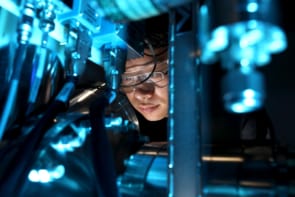
Iron has been an important metal to humans for thousands of years, but it has a serious flaw: when exposed to moisture, it rusts easily. Understanding this corrosion process, and ultimately finding ways to slow or stop it, is therefore hugely important. Thanks to atomic-scale first-principles molecular dynamics simulations , researchers at Rice University in the US have now found that the material’s surface plays a crucial role in corrosion, forming reactive species even when immersed in a non-corrosive fluid.
Iron does not only rust in water. It also, somewhat counterintuitively, rusts in supercritical carbon dioxide (sCO2) – an inert substance often used in industrial applications because it is non-toxic, non-flammable, non-explosive and relatively cheap. In the new work, a team led by Boris Yakobson and Evgeni Penev found that when iron is exposed to sCO2, the surface of the iron acts like a catalyst, activating the inert fluid and lowering the energy barrier for the formation of reactive molecules like *HCO3– and *CO32- at the interface between the iron and the sCO2.
Water and nitrogen dioxide (NO2) are the two common impurities in sCO2. Any trace water molecules present in the sCO2 also react with the activated sCO2 and form active corrosive species in turn, including oxygen, hydroxide, carboxylic acid and nitrous acid. The water reacts with other impurity molecules such as NOx and SOx too, forming corrosive acids such as H2CO3, HNO3 and H2SO4. Finally, water provides a hydrogen bond network that triggers interfacial reactions with the activated CO2 and impurities, again forming active, corrosive species, such as *OH, *O, *COOH.
The power of theoretical modelling
The researchers obtained these results by performing ab initio molecular dynamics simulation at the atomic level. Their findings shed fresh light on the mechanisms behind metal corrosion in aqueous and supercritical fluids and may even point to possible remedies. Writing in the journal Matter, the researchers suggest that thin hydrophobic layers of two-dimensional materials such as graphene or hexagonal boron nitride could be employed as a barrier between the iron atoms and the reactive elements of sCO2.

Graphene additives promote ‘eco-friendly’ corrosion protection
The study also illustrates the power of theoretical modelling to solve complicate chemistry problems, they say – in this case, enabling them to predict the thermodynamics of the reactions occurring and so estimate corrosion rates between iron and sCO2.



